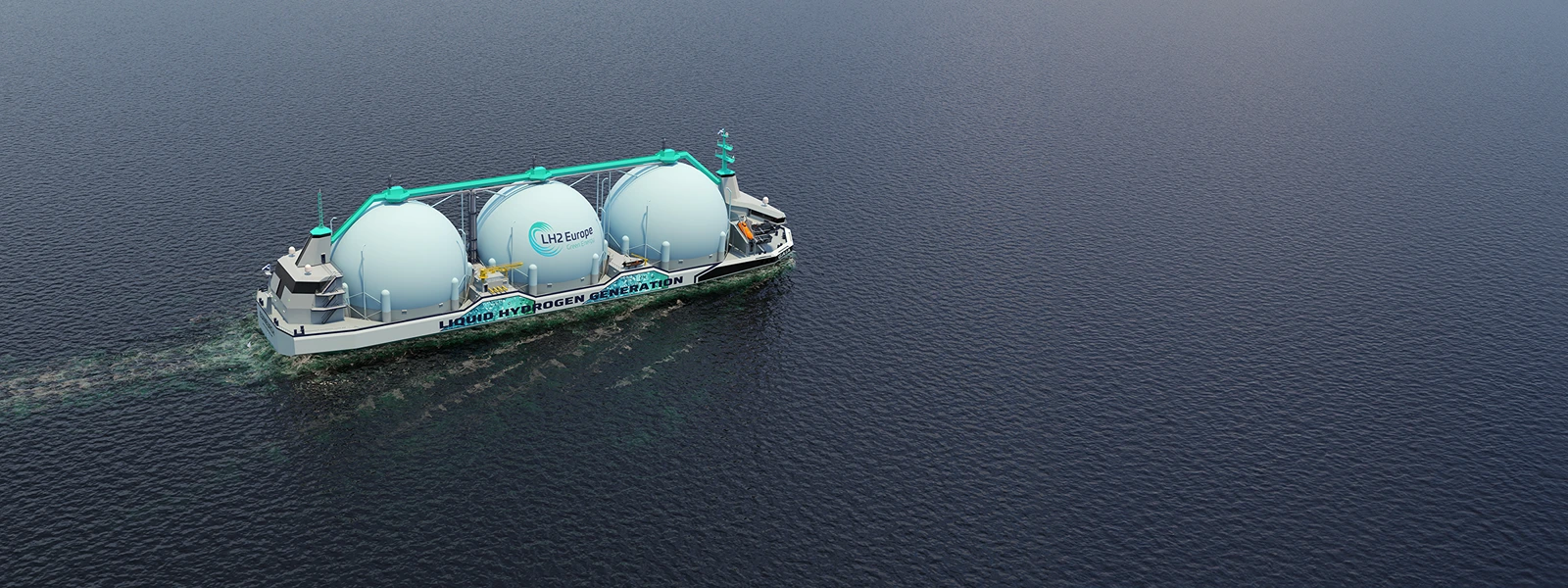Hydrogen energy
Liquid hydrogen is high in volume but 20 times lighter than LNG. It provides unique challenges in ship design and engineering, yet has the benefit of reducing tank-to-propeller GHG emissions by more than 90%.
Hydrogen is best suited to ships operating over short distances, and will require infrastructure development, particularly in ports, for the industry to scale. C-Job has already completed basic, detail design and building supervision for a liquid hydrogen tanker vessel with fuel cells to a support a green hydrogen supply chain.
A number of power generation options are possible with hydrogen, including dual-fuel engines (which C-Job has proven in operational environments), and proton exchange membrane fuel cells (PEMFCs), which use hydrogen energy to generate electricity. To reduce greenhouse gas emissions for your particular vessel, C-Job can assist in choosing the best hydrogen-based renewable fuel.
Discover more

C-Job and LH2 Europe – liquid hydrogen tanker
More about C-Job
Our R&D work has contributed to a ripple effect, as the impact of our vessel designs and technical solutions continues to spread. Discover how we are empowering clients to build better ships, as we propel the maritime industry towards a more sustainable future.